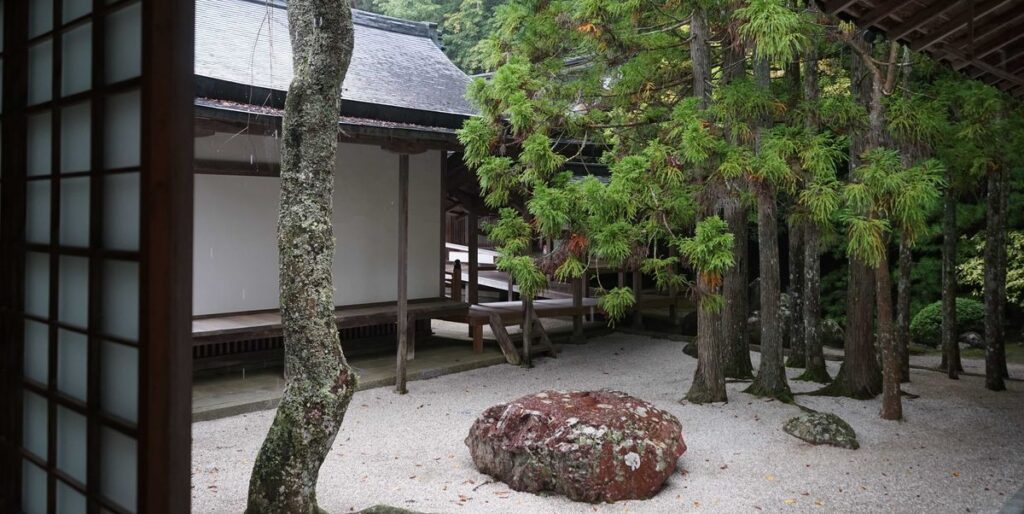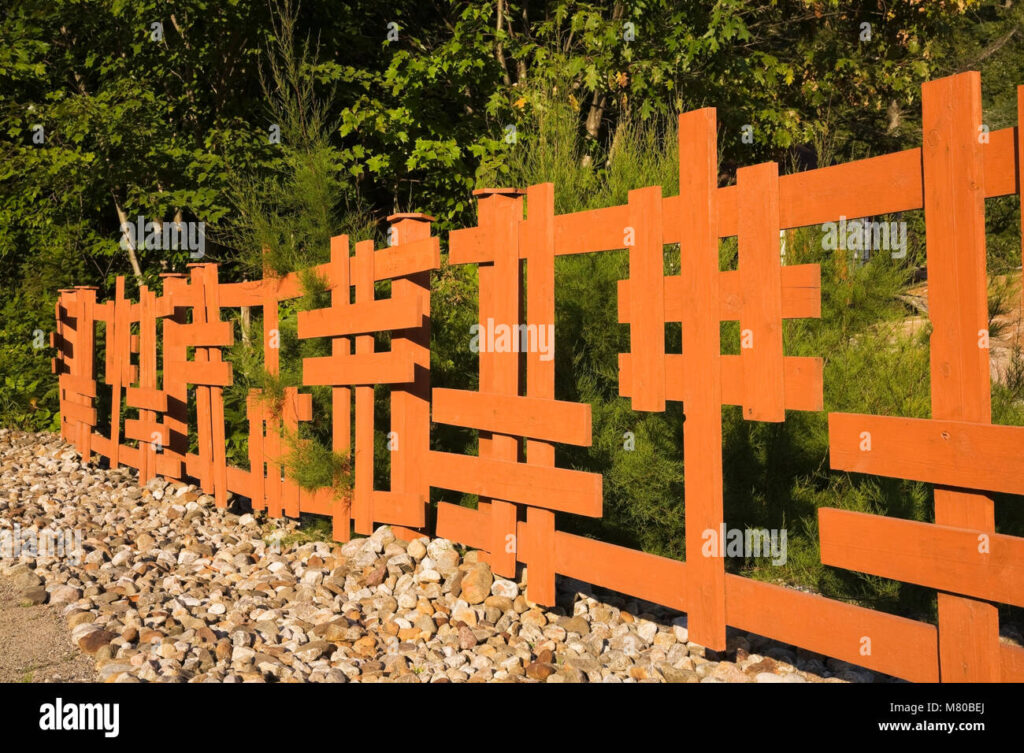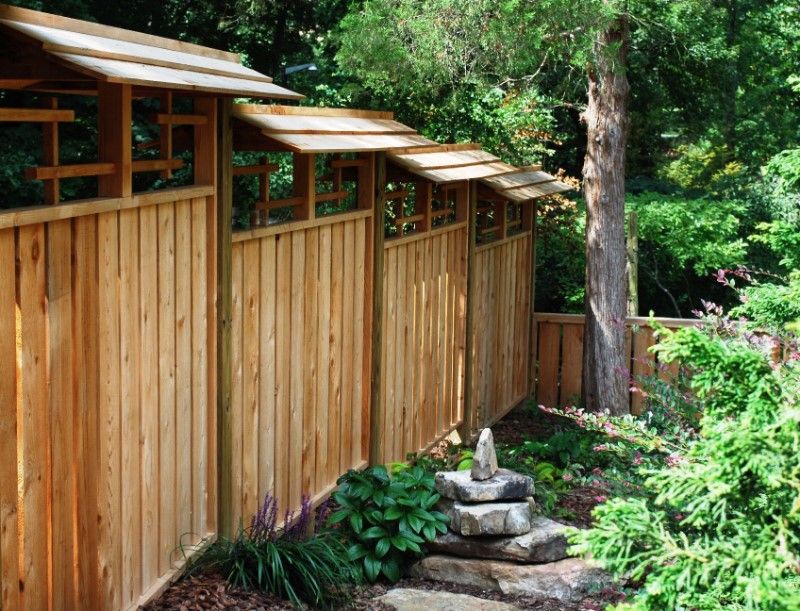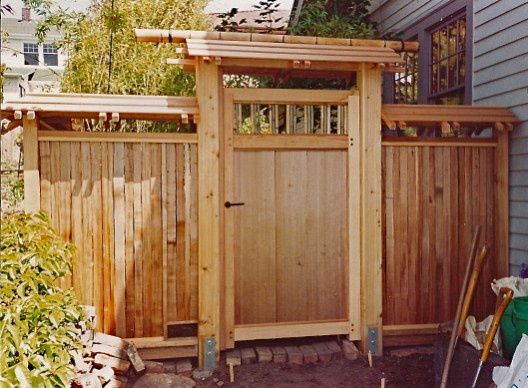In “Creating a Sense of Zen with Japanese-Style Fences,” the focus is on expanding a blog dedicated to providing comprehensive and engaging content about fences. The goal is to create posts that educate readers on various fence types, sizes, shapes, materials, and their suitability for different needs. By diving into the intricacies of different fence types and offering insights on choosing the appropriate size and shape based on specific requirements, the aim is to provide valuable knowledge and practical advice. Additionally, by addressing common questions and concerns, the blog strives to become a trusted resource for all things related to fences.
Japanese-Style Fences
When it comes to creating an atmosphere of tranquility and serenity in your outdoor space, Japanese-style fences are a popular choice. These fences are not only functional but also have a distinct aesthetic appeal that can enhance the overall look and feel of your property. In this article, we will explore the history, traditional designs, materials used, benefits, considerations for installation, and maintenance of Japanese-style fences. We will also discuss how these fences can be used to provide privacy, create a Zen garden, enhance security, and add to the overall aesthetic appeal of your outdoor space. So let’s dive in and explore the world of Japanese-style fences.
1. Introduction to Japanese-Style Fences
1.1 History and Origins
Japanese-style fences, also known as “Sukiya-zukuri,” have a rich history rooted in the traditional architecture of Japan. These fences have been a part of Japanese culture for centuries and are often associated with the country’s famous Zen gardens. The origins of Japanese-style fences can be traced back to the tea ceremony houses and gardens of the 16th century, where they were used to create boundaries and provide privacy. Over time, Japanese-style fences have evolved to become an important element in Japanese landscape design.
1.2 Key Features of Japanese-Style Fences
Japanese-style fences are characterized by their simplicity, elegance, and natural materials. These fences often feature clean lines, minimalistic designs, and a harmonious integration with the surrounding environment. Traditional Japanese-style fences are typically constructed using wood, bamboo, or stone, and they can be customized to suit various architectural styles and preferences. The key features of Japanese-style fences include their ability to blend with nature, create a sense of enclosure, and evoke a feeling of calm and tranquility.

2. Traditional Japanese Fence Designs
Japanese-style fences come in various designs, each with its own unique characteristics and aesthetic appeal. Let’s explore some of the traditional designs commonly seen in Japanese architecture and landscape design.
2.1 Shoji Fence
The Shoji fence is a popular traditional design that features a lattice pattern made from wood or bamboo. This design allows light to pass through while still maintaining privacy. The geometric pattern creates a visually appealing effect, and the Shoji fence is often used to enclose gardens or designate specific areas within a larger space.
2.2 Katori Fence
The Katori fence is known for its distinctive crisscross pattern, created by interlocking wooden or bamboo slats. This design provides both privacy and security while still allowing air and light to penetrate. The Katori fence is commonly used in residential settings to enclose gardens, courtyards, or entryways.
2.3 Bamboo Fence
Bamboo fences are a classic choice in Japanese-style design. They are lightweight, durable, and environmentally friendly. Bamboo fences can be constructed in various styles, such as rolled bamboo, split bamboo, or bamboo cane fencing. These fences have a natural, rustic appearance and are often used to create boundaries or screen off specific areas.
2.4 Ishigaki Fence
The Ishigaki fence, also known as a stone wall fence, features a combination of stone and wood elements. It is a sturdy and long-lasting design that provides a sense of solidity and permanence. The stone base is complemented by wooden slats or beams, creating an attractive contrast of textures and materials.
2.5 Kumiko Fence
Kumiko fences are intricate and decorative, featuring wooden geometric patterns and intricate latticework. These fences often serve as decorative elements and are commonly found in Zen gardens or traditional Japanese architecture. The delicate craftsmanship and attention to detail make Kumiko fences a true work of art.
3. Materials Used in Japanese-Style Fences
Japanese-style fences utilize natural materials to create a harmonious blend with the surrounding environment. Let’s explore the three main materials commonly used in the construction of Japanese-style fences.
3.1 Wood
Wood is the most common material used in Japanese-style fences. Cedar, cypress, and pine are popular choices due to their durability, resistance to weather, and natural beauty. Wood can be shaped, carved, or left in its natural state to achieve different effects. The warm tones and natural grain of wood contribute to the overall aesthetic appeal of Japanese-style fences.
3.2 Bamboo
Bamboo is another popular material in Japanese-style fences due to its versatility and sustainability. Bamboo is lightweight, strong, and grows quickly, making it an eco-friendly choice. It can be used in its natural form, or split and woven to create intricate designs. Bamboo brings a natural, organic feel to Japanese-style fences and adds to their overall aesthetic appeal.
3.3 Stone
Stone is often used as a foundational element in Japanese-style fences. It provides stability, durability, and a sense of permanence. Stone can be used as a base or a structural element in combination with wood, creating a visual contrast and adding a touch of elegance to the fence. Different types of stone, such as granite or limestone, can be used to achieve varying textures and colors.

4. Benefits of Japanese-Style Fences
Japanese-style fences offer a range of benefits beyond their aesthetic appeal. Let’s explore some of the advantages of incorporating these fences into your outdoor space.
4.1 Tranquility and Serenity
One of the primary benefits of Japanese-style fences is their ability to create a tranquil and serene atmosphere. The minimalist designs, use of natural materials, and harmonious integration with the surrounding environment evoke a sense of peace and calm. Japanese-style fences can help to create a peaceful retreat within your outdoor space, allowing you to escape from the hustle and bustle of daily life.
4.2 Natural Integration
Japanese-style fences seamlessly blend with their surroundings, creating a natural and harmonious look. The use of materials like wood, bamboo, and stone, along with their simplistic designs, allows these fences to integrate seamlessly with various architectural styles. Whether you have a modern or traditional home, a Japanese-style fence can complement your existing aesthetics and enhance the overall visual appeal of your property.
4.3 Durability and Longevity
Japanese-style fences are known for their durability and longevity. When built using high-quality materials and proper construction techniques, these fences can withstand the test of time. Wood fences can be treated to resist rot, insects, and weathering, while stone fences require minimal maintenance and can last for decades. Bamboo fences, when properly cared for, can also have a long lifespan. Investing in a Japanese-style fence means investing in a fence that will stand the test of time.
5. Considerations for Installing Japanese-Style Fences
Before installing a Japanese-style fence, there are several factors to consider to ensure that it serves its intended purpose and meets your specific needs. Let’s explore some essential considerations for installing Japanese-style fences.
5.1 Property Size and Layout
The size and layout of your property are crucial considerations when installing a Japanese-style fence. Determine the areas you want to enclose or designate as separate spaces. Consider the overall dimensions of your outdoor space and the desired height and length of the fence. Taking accurate measurements and planning accordingly will help you determine the appropriate size and layout for your fence.
5.2 Local Building Regulations
Before proceeding with any fence installation, it is important to research and comply with local building regulations and any homeowner association guidelines. Some areas may have specific rules regarding fence materials, heights, setbacks, or overall design. By familiarizing yourself with these regulations, you can avoid potential conflicts and ensure your fence is installed within the legal framework.
5.3 Budget and Cost
Budget is a significant consideration when installing a Japanese-style fence. The cost of materials, as well as installation if you choose to hire professionals, should be taken into account. While Japanese-style fences can be an investment, their long lifespan and aesthetic appeal make them a worthwhile expenditure. Carefully consider your budget and explore different material options to find the best solution that fits your financial capabilities.
5.4 Installation Process
The installation process of Japanese-style fences can vary depending on the design, materials, and complexity of the project. If you have experience and the necessary tools, you may choose to install the fence yourself. However, for more intricate designs or larger projects, it is recommended to hire professional contractors with experience in Japanese-style fence installation. Professionals will ensure that the fence is installed correctly, meeting both aesthetic and functional requirements.

6. Japanese-Style Fences for Privacy
Privacy is often a top priority for homeowners, and Japanese-style fences can provide an elegant solution. Let’s explore how Japanese-style fences can enhance privacy in your outdoor space.
6.1 Traditional Privacy Concepts
Japanese culture emphasizes privacy and enclosure within the home and garden. Japanese-style fences are designed with this in mind, providing a sense of seclusion and privacy without sacrificing visual appeal. Whether it’s the lattice patterns of a Shoji fence or the solid construction of an Ishigaki fence, these designs allow for privacy without completely isolating your outdoor space.
6.2 Enhancing Privacy with Japanese-Style Fences
To maximize privacy with Japanese-style fences, consider the design elements that provide the most coverage. Opt for taller fences to block the view from neighboring properties or public areas. Choose fences with tightly woven or solid elements, such as the Katori or Ishigaki fence designs. These elements can prevent prying eyes from seeing into your space while still allowing light and air to circulate.
7. Japanese-Style Fences for Zen Gardens
Zen gardens are known for their simplicity, tranquility, and balance. Japanese-style fences can be an integral part of creating a Zen atmosphere in your outdoor space. Let’s explore how Japanese-style fences can be incorporated into Zen gardens.
7.1 Creating a Zen Atmosphere
Zen gardens are designed to evoke a sense of peace and harmony. The use of natural materials, clean lines, and balanced elements plays a crucial role in achieving this atmosphere. Japanese-style fences can help define the boundaries of a Zen garden, creating a sense of enclosure and providing a backdrop for the other elements within the garden.
7.2 Incorporating Japanese-Style Fences in Zen Gardens
When incorporating Japanese-style fences into a Zen garden, consider designs that complement the overall aesthetic. Bamboo fences can add a vertical element and create a sense of rhythm with their repeating patterns. Stone-based fences, such as Ishigaki fences, can provide a solid foundation and a visual anchor within the garden. Choose designs that harmonize with the other elements in your Zen garden, such as gravel paths, rock formations, and carefully placed plants.

8. Maintenance of Japanese-Style Fences
Ensuring the longevity and beauty of your Japanese-style fence is essential. Let’s explore some maintenance tips to keep your fence looking its best.
8.1 Cleaning and Repairs
Regular cleaning is necessary to prevent the buildup of dirt, debris, or mold on your Japanese-style fence. Wood fences can be cleaned with a mild detergent and water solution, followed by rinsing with clean water. Avoid using harsh chemicals or abrasive tools that can damage the wood. Bamboo fences can be wiped clean with a damp cloth or a soft brush. Stone fences may require periodic cleaning to remove dirt or moss, which can be done using a mild detergent and a soft brush.
Inspect your fence periodically for any signs of damage or wear. Repair any loose or broken elements promptly to prevent further damage. For wood fences, consider applying a protective sealant or stain to preserve the color and integrity of the wood. Follow manufacturer recommendations for specific care instructions based on the material of your fence.
8.2 Seasonal Maintenance
Seasonal maintenance is important for the long-term durability of your Japanese-style fence. In colder climates, consider weatherizing your fence to protect it from moisture and freezing temperatures. This may involve applying a protective coating or wrapping the fence with burlap during the winter months. In warmer climates, protect your fence from excessive sun exposure by applying a sealant or placing shade-providing plants nearby.
Regularly inspect your fence for any signs of damage or wear after extreme weather events, such as strong winds or heavy rain. Address any issues promptly to maintain the structural integrity and overall appearance of your Japanese-style fence.
9. Japanese-Style Fences for Security
While Japanese-style fences are often associated with aesthetics and tranquility, they can also be designed to enhance security. Let’s explore how Japanese-style fences can be used to provide both security and visual appeal.
9.1 Balancing Aesthetics and Security
When incorporating security features into a Japanese-style fence, it is essential to find a balance between functionality and aesthetics. Japanese-style fences can be designed to enhance security without compromising the overall visual appeal and peaceful atmosphere. The choice of materials and variations in fence height can provide a sense of enclosure while still maintaining an inviting and serene environment.
9.2 Incorporating Security Features
To enhance security, consider adding features such as gate locks, security cameras, or motion-activated lights to your Japanese-style fence. These features can deter potential intruders while still maintaining the overall aesthetic appeal of your outdoor space. Additionally, consider choosing fence designs with solid elements or denser patterns, which can provide an additional layer of security by reducing visibility from outside.

10. Enhancing Aesthetic Appeal with Japanese-Style Fences
Japanese-style fences are renowned for their aesthetic appeal, and they can significantly enhance the overall look and feel of your outdoor space. Let’s explore some ways to enhance the aesthetics of your Japanese-style fence.
10.1 Harmonizing with Surroundings
Japanese-style fences are designed to blend harmoniously with their surroundings. Take inspiration from the natural elements surrounding your property and choose fence materials and designs that complement the existing landscape. Incorporate plants, such as climbing vines or bamboo, to soften the look of the fence and create a more organic and integrated appearance.
10.2 Decorative Elements and Accents
Enhance the aesthetic appeal of your Japanese-style fence by incorporating decorative elements and accents. Consider adding lanterns, stepping stones, or bamboo screens to create visual interest and focal points. These decorative elements can further enhance the traditional Japanese aesthetic and create a captivating outdoor space.
As a result, here are ten most common questions people ask about fences:
- How much does a Japanese-style fence cost?
- Can I install a Japanese-style fence myself?
- What are the main differences between a bamboo fence and a wood fence?
- How do I maintain a Japanese-style fence in different seasons?
- Will a Japanese-style fence provide enough privacy for my backyard?
- Can I add security features, such as cameras or motion sensors, to a Japanese-style fence?
- Are there any restrictions on using Japanese-style fences in certain neighborhoods or communities?
- Can I incorporate a Japanese-style fence into my existing landscape design?
- How long does a Japanese-style fence typically last?
- What steps should I take to ensure proper installation and durability of a Japanese-style fence?
Here is a table comparing different types of Japanese-style fences:
| Fence Type | Material | Design | Privacy | Aesthetic Appeal |
|---|---|---|---|---|
| Shoji Fence | Wood | Lattice pattern | Moderate | High |
| Katori Fence | Wood | Crisscross pattern | High | Moderate |
| Bamboo Fence | Bamboo | Rolled, split, or cane style | Moderate | High |
| Ishigaki Fence | Wood, Stone | Wood and stone combination | High | High |
| Kumiko Fence | Wood | Geometric patterns | Low | High |
In conclusion, Japanese-style fences offer a unique blend of functionality, aesthetics, and cultural significance. Whether you want to create a sense of tranquility, enhance privacy, add to the beauty of a Zen garden, or increase security, Japanese-style fences can be an excellent choice for your outdoor space. By understanding the history, traditional designs, materials used, benefits, considerations for installation, and maintenance of Japanese-style fences, you can make informed decisions and create a visually appealing and peaceful environment. So go ahead and explore the world of Japanese-style fences to transform your outdoor space into an oasis of serenity and beauty.
